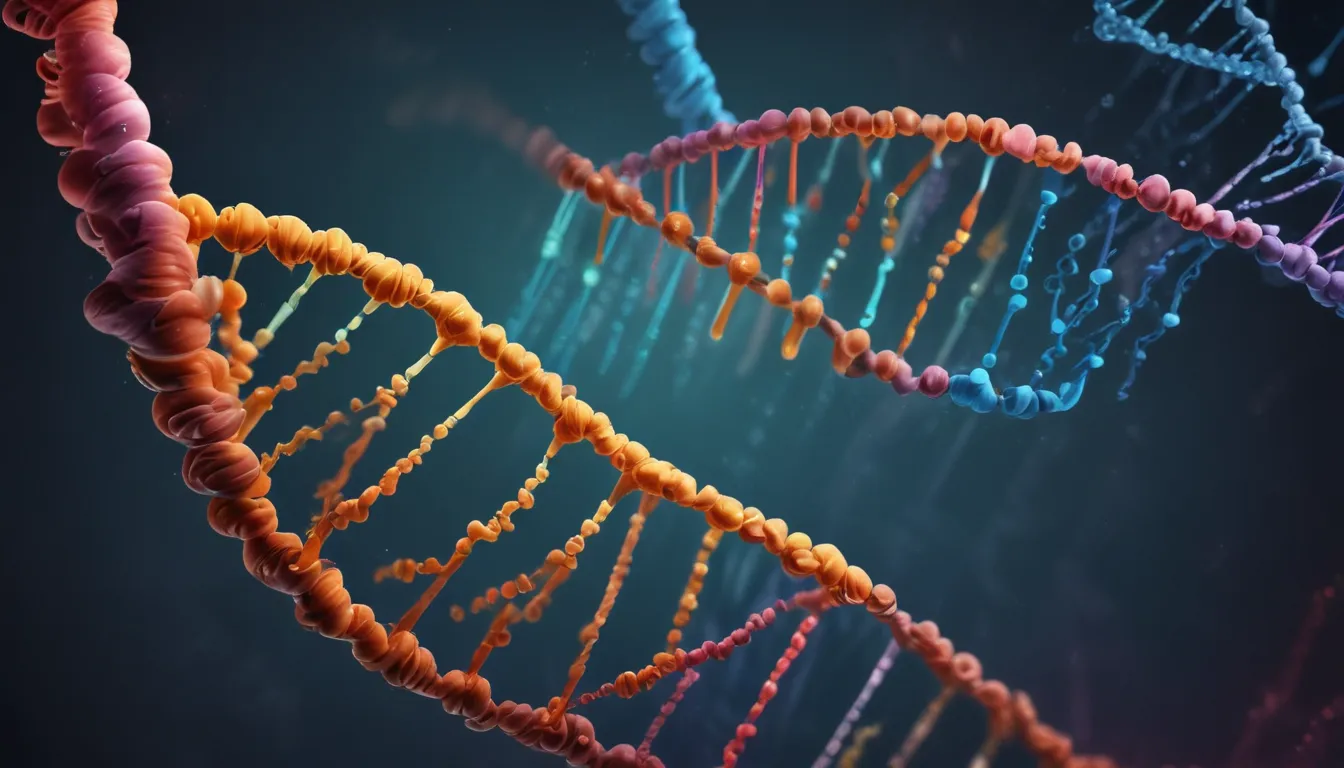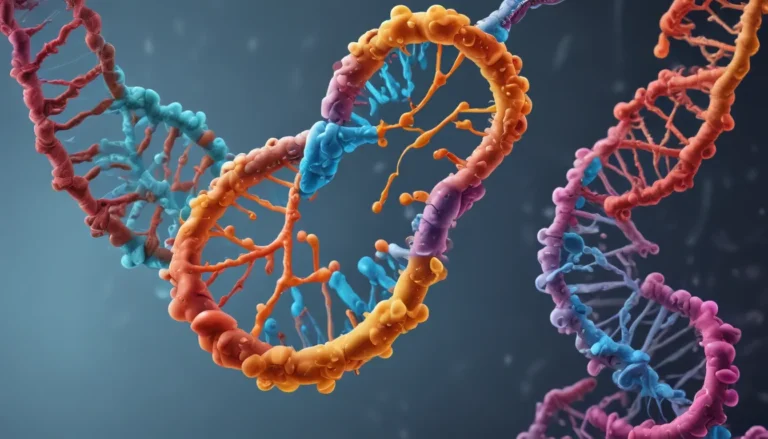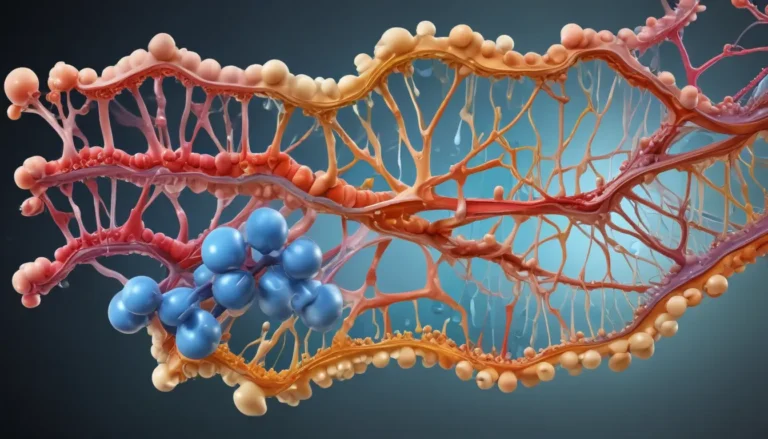A Note About Images: The images used in our articles are for illustration purposes only and may not exactly match the content. They are meant to engage readers, but the text should be relied upon for accurate information.
Welcome to a captivating journey into the world of DNA gyrase, a superhero enzyme vital for the replication and maintenance of DNA in living organisms. From its role in DNA supercoiling to its significance in antibiotic resistance, DNA gyrase continues to mesmerize scientists and researchers with its remarkable properties. In this article, we will uncover 18 unbelievable facts about DNA gyrase, shedding light on its complex structure, essential functions, and profound impact on various biological processes. Get ready to be amazed as we unravel the mysteries behind this fascinating enzyme and its pivotal role in the intricate machinery of life.
Unlocking the Secrets of DNA Gyrase: Key Takeaways
- DNA Caretaker: DNA gyrase acts as a DNA caretaker in bacterial cells by supercoiling, relieving strain, and preventing tangling, ensuring the organization and health of DNA.
- Antibiotic Target: Antibiotics target DNA gyrase in bacteria to halt DNA replication, offering new ways to combat infections without harming human cells.
Understanding DNA Gyrase: The Superhero Enzyme
DNA gyrase serves as a crucial enzyme involved in DNA replication and maintenance, responsible for supercoiling the DNA molecule by introducing negative supercoils. This process helps compact the DNA, facilitating efficient packaging within the cell and ensuring proper genetic stability. Additionally, DNA gyrase aids in relieving strain within DNA strands during processes like replication and transcription, demonstrating its versatility and importance in cellular functions.
Unveiling the Importance of DNA Gyrase
The absence of DNA gyrase would pose a significant threat to cell viability, as the enzyme is deemed essential for the proper replication and maintenance of DNA. Its absence in eukaryotic cells, coupled with its critical role in bacterial physiology, makes DNA gyrase a prime target for antibiotics aimed at combating bacterial infections while sparing human cells from harm.
Antibiotics and DNA Gyrase: A Targeted Approach
Certain antibiotics, such as fluoroquinolones, exploit the importance of DNA gyrase in DNA replication by inhibiting its function, thereby preventing bacterial cells from reproducing effectively. Understanding the unique vulnerability of DNA gyrase in bacteria has paved the way for the development of targeted antibiotic therapies that selectively attack bacterial DNA gyrase without affecting human cells.
DNA Gyrase in the Evolutionary Tapestry
Believed to have evolved early in the history of life on Earth, DNA gyrase’s presence in ancient domains such as bacteria and archaea underscores its fundamental role in genetic material maintenance and development. Its highly conserved nature across bacterial species highlights the enzyme’s evolutionary significance and its enduring impact on cellular processes.
The Intriguing Mechanisms of DNA Gyrase
DNA gyrase’s catalytic activities are fueled by ATP, enabling it to carry out essential functions like supercoiling, relaxation, and DNA repair. This remarkable enzyme not only orchestrates DNA topology but also plays a critical role in DNA segregation during cell division, ensuring the accurate transfer of genetic information to daughter cells.
Exploring DNA Gyrase’s Potential in Drug Development
The remarkable efficiency of DNA gyrase in modulating DNA topology has made it an attractive target for developing novel antibiotics. By understanding the enzyme’s structure and function, scientists are uncovering new avenues for therapeutic interventions that combat bacterial infections by targeting DNA gyrase while sparing human cells from harm. This targeted approach holds promise for the future of antibiotic development and infectious disease treatment.
FAQs: Unraveling the Mysteries of DNA Gyrase
- What is DNA gyrase?
-
DNA gyrase is a topoisomerase enzyme crucial for DNA replication, transcription, and repair, responsible for maintaining DNA stability by introducing negative supercoils.
-
How does DNA gyrase work?
-
DNA gyrase functions by breaking and rejoining DNA strands, utilizing ATP hydrolysis to introduce negative supercoils into the DNA molecule.
-
What are the functions of DNA gyrase?
-
DNA gyrase plays multiple essential roles, including DNA replication, transcription regulation, and DNA repair, ensuring the proper organization and stability of genetic material.
-
What happens if DNA gyrase is inhibited?
-
Inhibition of DNA gyrase disrupts DNA replication and transcription processes, leading to bacterial cell death, making it a desirable target for antibiotic therapy.
-
Are there known inhibitors of DNA gyrase?
- Yes, several inhibitors of DNA gyrase, such as fluoroquinolone antibiotics like ciprofloxacin, bind to the enzyme, preventing its function and ultimately killing bacterial cells.
Conclusion: Embarking on a Molecular Adventure
In conclusion, DNA gyrase stands as a critical component of the intricate machinery that governs genetic stability and cellular processes. Its ability to regulate DNA topology and facilitate essential functions like replication and repair underscores its indispensability in maintaining the integrity of genetic material. By delving into the astounding facts about DNA gyrase, we gain a deeper understanding of its significance and potential in advancing therapeutic interventions and combating bacterial infections.
Join us on a fascinating journey through the realm of DNA gyrase, antibiotics, and molecular biology, where each discovery unravels new insights into life’s fundamental building blocks. Explore the interconnected topics of enzyme inhibition, genetic stability, and antibiotic resistance to broaden your knowledge and appreciation of the captivating world of molecular biology.
Trust in our commitment to accuracy and authenticity as we strive to deliver engaging and insightful content that enriches your understanding of DNA gyrase and its profound impact on the world of biology. Dive into the wonders of DNA gyrase and uncover the secrets that shape life at its molecular core.






